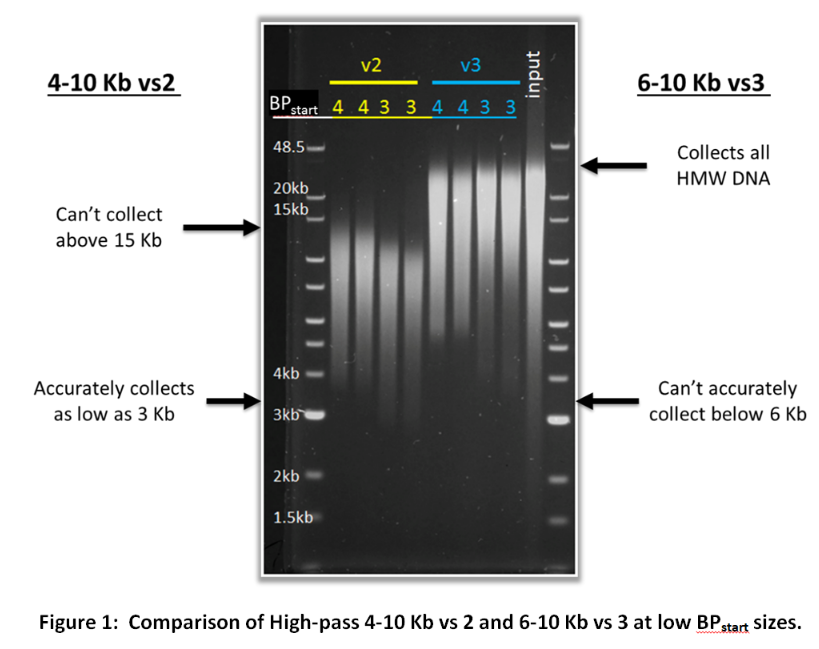Customers may have noticed two very similar cassette definitions; 0.75%DF Marker S1 high-pass 4-10kb vs2 and 0.75%DF Marker S1 High-Pass 6-10kb vs3. Since these two protocols cover a similar range, they might seem a bit redundant. However, both of these cassette definitions are important because they can complement the limitations of the other. The 6-10 Kb vs3 protocol cannot start collection below 6 Kb accurately while the 4-10 Kb vs2 protocol can accurately begin collection in the 4-6 Kb range (and can even achieve reasonable accuracy as low as 3 Kb). However, the 4-10 Kb vs2 protocol can only collect up to ~15 Kb DNA fragments while the 6-10 Kb vs3 protocol will collect all high molecular weight DNA. The figure below demonstrates the limitations and strengths of these two protocols.
If you are unsure whether to use the 4-10 Kb vs 2 or the 6-10 Kb vs 3 cassette definition for your high pass filtering, consider the criteria below:
- If you are following the protocol produced by one of our partners (such as Pacific Biosciences) use the cassette definitions they recommend.
- If you want to start collection between 6-10 Kb, use the 6-10 Kb vs 3 cassette definition.
- If you want to start collection between 4-6 Kb and you don’t need DNA over 15 Kb, use the 4-10 Kb cassette definition.
- If you want to start collection between 4-6 Kb and you absolutely need DNA over 15 KB, contact customer service for assistance.
Hopefully this post clears up some of the confusion customers have had with these two protocols. For more information on programming a high pass protocol on the Blue Pippin, please refer to this user guide.






